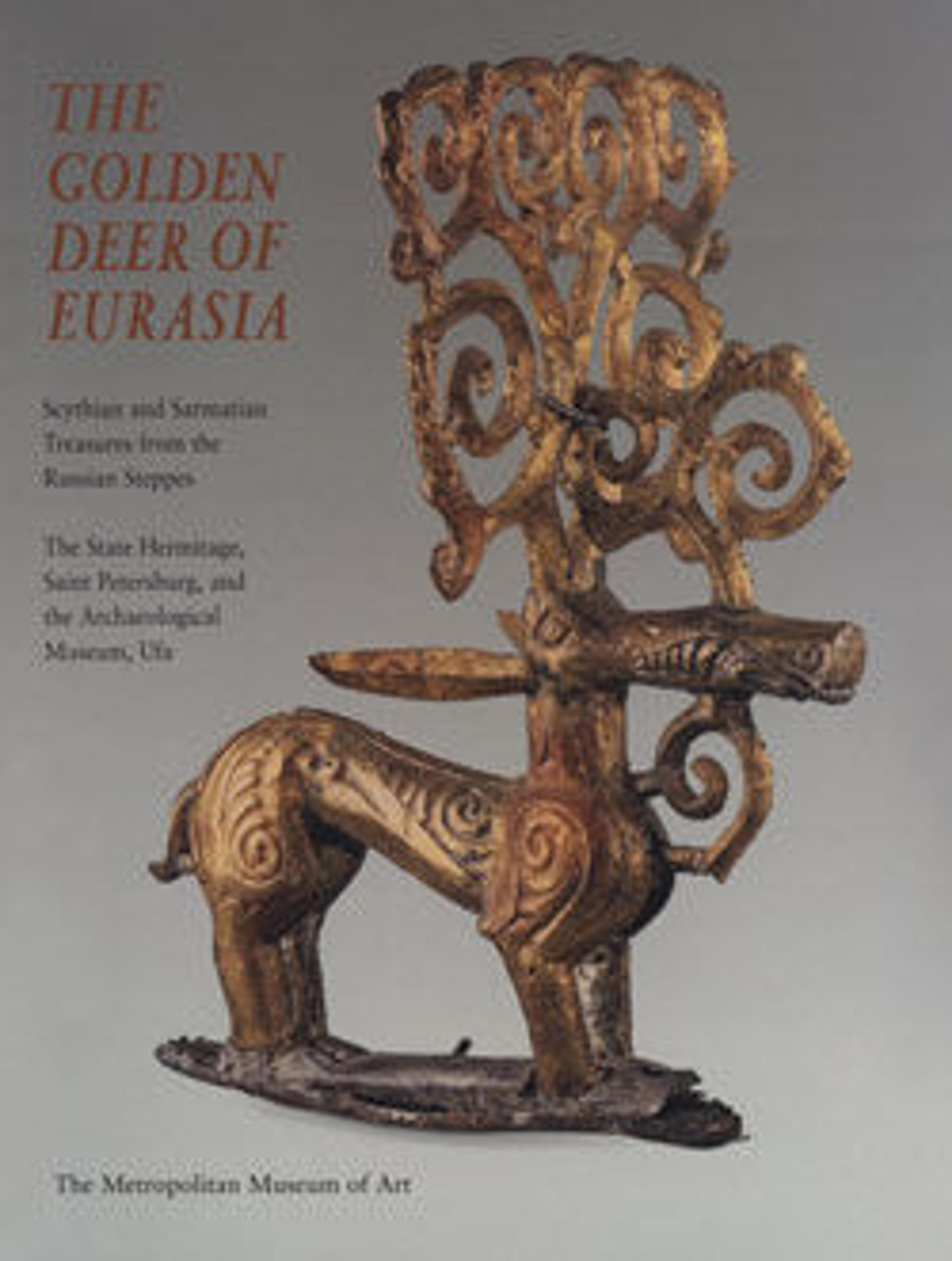Rhyton terminating in the forepart of a ram
This silver vessel is called a ‘rhyton’ (from the Greek rheo, meaning ‘flow through’) by scholars because it has a spout at the bottom. Like many rhyta, it consists of a horn-shaped beaker and a hollow sculptural element, in this case in the form of the foreparts of a kneeling ram or ibex. The ibex has curved horns, pointed ears, heavy brows, a narrow snout and a chin beard. Rows of spiral curls on its chest and back indicate hair or possibly fleece. The animal’s hindquarters are depicted in row relief on the beaker itself, with its hind legs running straight up the side. A feather is engraved on each of the ibex’s flanks, perhaps suggesting wings. The beaker is decorated with horizontal fluting. Below the outturned rim is a repeating pattern of engraved lotuses and palmettes, separated from the fluting by a guilloche border. The two parts of the rhyton are now joined by an acrylic ring and it is not certain that both parts were originally part of the same vessel.
Rhyta originated in the Achaemenid Persian Empire, combining the older Near Eastern traditions of animal-headed beakers and Iranian traditions of animal-shaped vessels. They were used at royal banquets, where the Persian king displayed his wealth and power, and the ability to drink skillfully from a rhyton marked one as a member of the elite who were invited to such banquets. Rhyta were thus symbols of high status. Though many Achaemenid rhyta feature mythical or composite creatures, this one has ibex, a distinctly Iranian motif, because ibexes are native to the Zagros Mountains of western Iran, but did not live, for example, on the plains of Mesopotamia.
Rhyta originated in the Achaemenid Persian Empire, combining the older Near Eastern traditions of animal-headed beakers and Iranian traditions of animal-shaped vessels. They were used at royal banquets, where the Persian king displayed his wealth and power, and the ability to drink skillfully from a rhyton marked one as a member of the elite who were invited to such banquets. Rhyta were thus symbols of high status. Though many Achaemenid rhyta feature mythical or composite creatures, this one has ibex, a distinctly Iranian motif, because ibexes are native to the Zagros Mountains of western Iran, but did not live, for example, on the plains of Mesopotamia.
Artwork Details
- Title: Rhyton terminating in the forepart of a ram
- Period: Achaemenid
- Date: ca. 5th century BCE
- Geography: Iran
- Culture: Achaemenid
- Medium: Silver
- Dimensions: Height: 8.13 in. (20.65 cm); Length: 6.25 in. (15.88 cm); Diameter of rim: 4.88 in. (12.40 cm); Height of ram protome: 4.69 in. (11.9 cm); Width of ram's horns: 2.87 in. (7.3 cm)
- Credit Line: Gift of Norbert Schimmel Trust, 1989
- Object Number: 1989.281.30a, b
- Curatorial Department: Ancient West Asian Art
More Artwork
Research Resources
The Met provides unparalleled resources for research and welcomes an international community of students and scholars. The Met's Open Access API is where creators and researchers can connect to the The Met collection. Open Access data and public domain images are available for unrestricted commercial and noncommercial use without permission or fee.
To request images under copyright and other restrictions, please use this Image Request form.
Feedback
We continue to research and examine historical and cultural context for objects in The Met collection. If you have comments or questions about this object record, please contact us using the form below. The Museum looks forward to receiving your comments.
